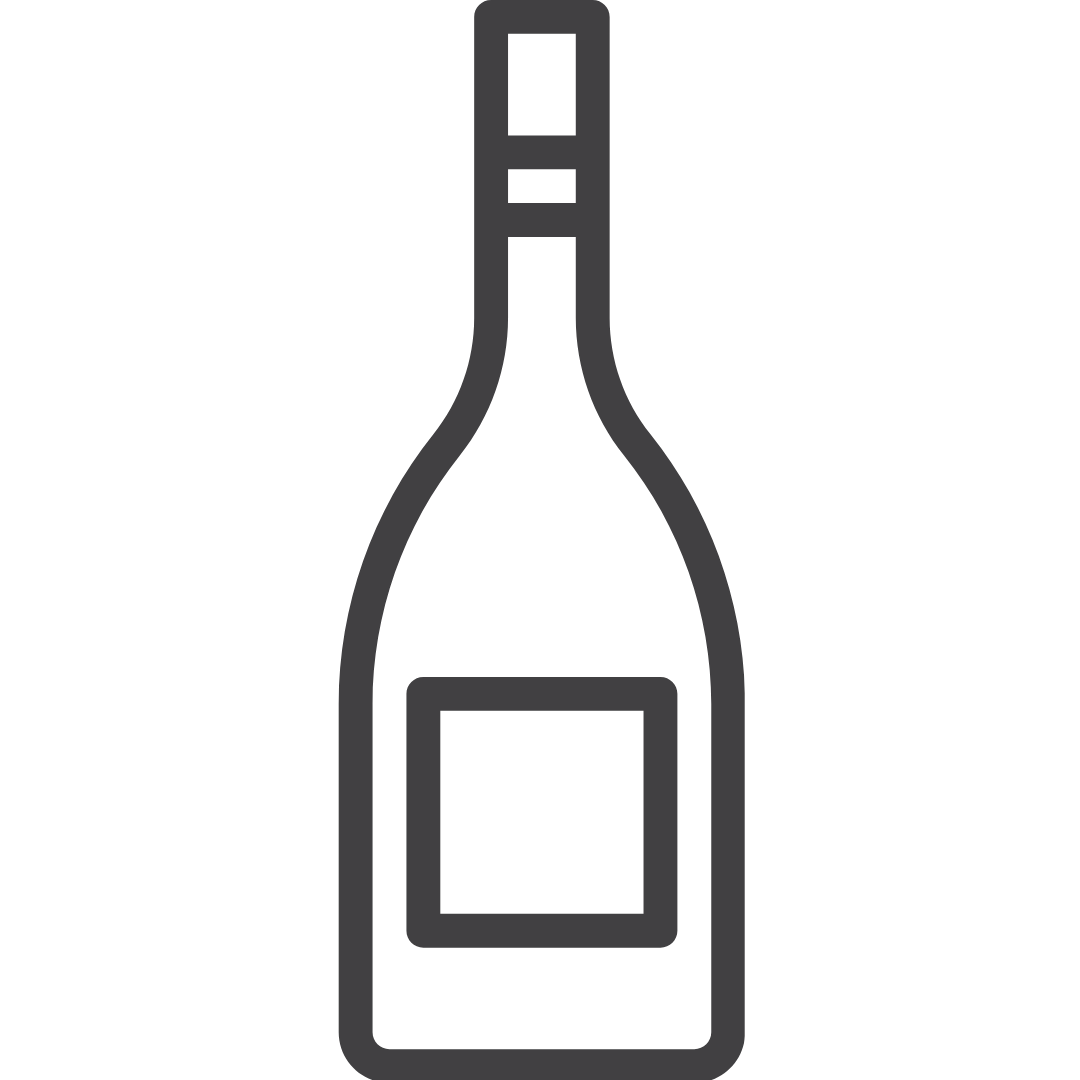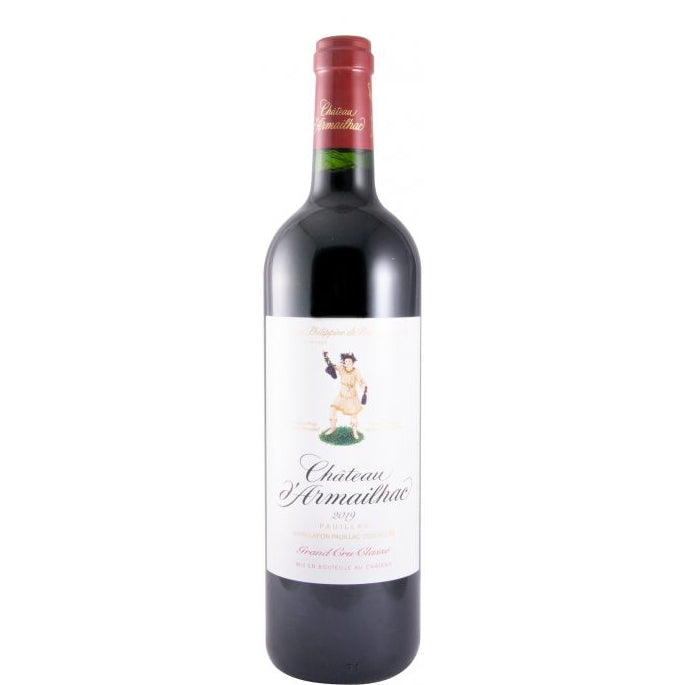Château d'Armailhac Pauillac Red 2019
Château d'Armailhac Pauillac Red 2019
Couldn't load pickup availability
The nose exudes intense black fruit aromas enhanced by notes of vanilla, pepper and mild spice.
From a structured and sappy attack, the mid-palate reveals a creamy, satin-smooth body on black fruit and chocolate flavours. Perfectly integrated, smooth and well-rounded tannins linger on a pleasant touch of fruit.
Floral and liquorice notes usher in a long and elegant finish.
 Baron Philippe de Rothschild
Baron Philippe de Rothschild
 France
France
 Bordeaux
Bordeaux
 2019
2019
 Cabernet Sauvignon, Merlot, Cabernet Franc, and Petit Verdot
Cabernet Sauvignon, Merlot, Cabernet Franc, and Petit Verdot
 75cl
75cl
 13,5%
13,5%
 16ºC - 18ºC
16ºC - 18ºC
Share

The story
An 1855 Classified Growth, Château d’Armailhac has 80 hectares (198 acres) of vines with an average age of 40 years, stretching over three gravel banks that embrace all the typical features of the Pauillac appellation.
The terroir, mostly comprising deep gravel, clay or clay-limestone and gravelly sand, is planted with classic Médoc grape varieties. The remarkable Cabernet Francs grown on the Plateau des Levantines from vines with an average age of 60 years are a hallmark of the wine.
Château d’Armailhac takes its name from the d’Armailhacq family who purchased the estate in 1660. Its history is bound up with that of pioneers of modern winegrowing such as Armand d’Armailhac. The estate was acquired by Baron Philippe de Rothschild in 1933, then inherited by his daughter Philippine de Rothschild. It now belongs to her three children, Camille and Philippe Sereys de Rothschild and Julien de Beaumarchais de Rothschild, who continue the family tradition with passion and innovation.
The vineyard
Château d’Armailhac is adjacent to Château Mouton Rothschild to the north. The south-facing vineyard spans 80 hectares (198 acres) on three different gravel banks, giving it all the typical features of the Pauillac appellation. The average age of the vines is 40 years.
In the heart of the terroir, the Plateau des Levantines and the Plateau de l’Obélisque, made up of light and very deep gravel, are ideal for growing Cabernet Franc and Cabernet Sauvignon. The prominence of Cabernet Sauvignon in the Médoc is closely linked to Château d’Armailhac, since Armand d’Armailhacq, its owner at the time, introduced and promoted the variety in the region (with Baron Hector de Brane).
Cabernet Franc, another traditional Bordeaux grape variety, also flourishes on the gravelly soil. The relatively high proportion of Cabernet Franc vines, which have an average age of 60 years, is unusual for a Médoc vineyard. They are mostly planted on the Plateau des Levantines. Made up of light gravel over limestone subsoil in which the vines can put down deep roots, it is an ideal terroir for expressing the variety’s elegance. These old Cabernet Franc vines make a key contribution to the identity of Château d’Armailhac.
The Pibran outcrop is where the finest Merlot parcels are to be found. The grapes reveal all their character in an ideal terroir of moderately deep gravel in clay-sand soil that has more limestone in the north.
Petit Verdot is planted on the Béhéré bank, made up of lighter, gravelly sand, and thrives on the naturally better-drained and damper soil.
The Pauillac style
Château d’Armailhac wines are made from a blend of Cabernet Sauvignon, Cabernet Franc, Merlot and Petit Verdot in proportions which vary according to the vintage, since the ideal conditions that allow each terroir and each grape variety to fully express themselves change from one year to another.
The wine is defined by a kind of elegant classicism, discernible whatever the vintage. The tannic structure is both robust and refined, providing a perfect foil for a complex array of aromas and flavours which continue to develop and emerge over time, with consistently forward fruit and typical lead‑pencil notes. Château d’Armailhac has considerable ageing potential but may also be enjoyed young. It is a perfect illustration of the Pauillac style, combining all the features of a great wine while remaining approachable.









